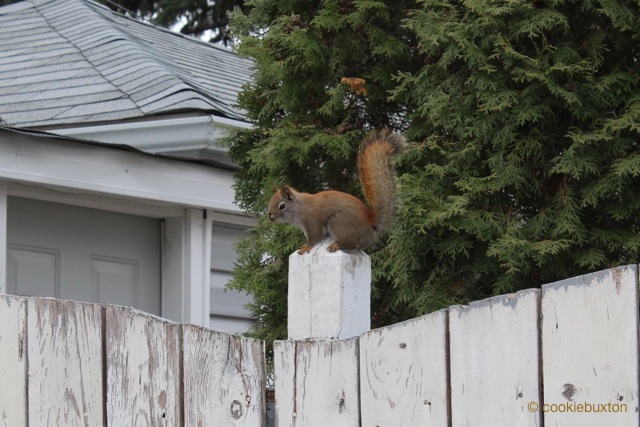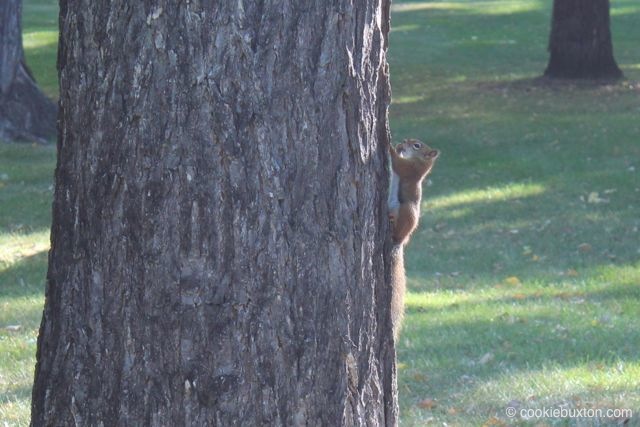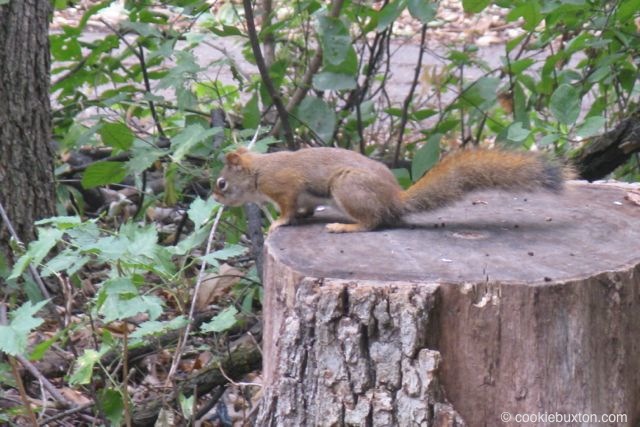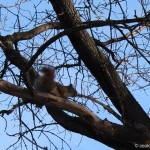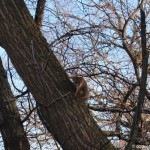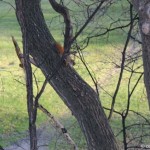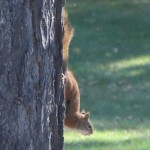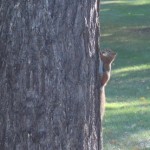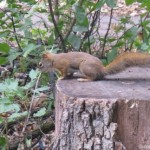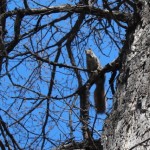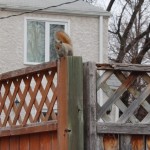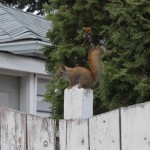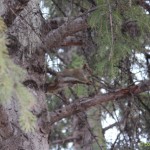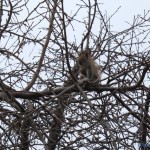The North American Red Squirrel
April 26, 2015
Seeing the red squirrels become active in spring is uplifting and fun. These noisy little charmers, with their “chirring” and chucks and barks are the acrobats of the city neighbourhood. They scurry along the telephone wires, stop and scold about something, chase each other around the tree trunks, bolt up the pine trees and wooden utility poles, and generally enliven our backlanes where city wildlife spends much of its time. Red squirrels mate in the later winter, and in March and April are usually taking care of a litter of three to seven youngsters.
I’ve added five new photographs to the Photo Gallery, below, for you to enjoy.
Photos and Text: copyright NK/cookiebuxton.com
November 9, 2013
Tamiasciurus hudsonicus.
The North American Red Squirrel-
“Pine Squirrel”, “Chickaree.”
Red squirrels are a familiar sight on the Canadian prairies. They are abundant in cottage country, on the farmlands, in the towns and cities, and in the boreal forests and mixed woodlands.
They are not as sweet as they look. They get inside our houses, chew insulation, stuff their pine cones up under the hoods of the cars (that was a $1000 dollar repair cost), bury their peanuts (my neighbour used to leave them peanuts) in our garden planters, and chir-and-chatter away at everyone while they guard their territories or do their daring acts of navigation along the telephone wires that criss-cross our neighbourhoods. They are the rodents that everyone loves to hate, and that everyone, well, loves.
It wasn’t until my adult years, when I saw a few of the large grey squirrels that live in Toronto, that I realized that our red squirrels of the flatlands (weighing in at about a half- to three-quarters of a pound) were much smaller than their eastern cousins, didn’t have particularly impressive tails, and were not very red, or at least, they were not very red all year long. They have as much grey as red in their winter coats, along with a white underbelly, but they do, you have probably noticed, become redder through the autumn months. They also have white circles around their eyes, which adds a bit of distinction to their appearance. In summer, they develop a black stripe along their sides (or perhaps it is just the males who do this).
There are three species of tree squirrels (and 25 sub-species) in North America. They are classified as pine squirrels, of the Tamiasciurus genus. The red squirrel is Tamiasciurus hudsonicus; the Douglas squirrel is T. douglasii; and Mearns’s squirrel is T. mearnsi.
Although their diets can be quite varied, tree squirrels mainly eat the seeds of spruce and pine cones, which they tuck away in summer and fall into hidden caches or under the earth. They also eat nuts and other types of seeds, some types of mushrooms, birds eggs, and even mice on occasion. Evidently, they have figured out how to get maple syrup on tap, as they enjoy sipping on this sweet treat when it is available.
Like many wild creatures, squirrels are territorial. Often, when we see them chasing one another, and one of the humans invariably squeals, “Oh, look at the cute squirrels playing in that tree,” they are more likely than not trying to determine who is king of the pine tree. I am not saying they murder one another, but it does sound like it sometimes.
Interestingly, as is the case with humans, they can inherit property from a parent. The mother squirrel will sometimes give her territory over to her offspring, along with her midden, which is a fancy name for a very big pile of pine cones, seeds, and nuts. It seems like a bit of an odd practice, but maybe the mother squirrel takes herself off to a better place and lets the kids keep the family home. It will be fun to read up a little about this practice and see what is going on when this occurs.
Photos and text: NK
Location: Local neighbourhood
Photo ID: 1311 series, 112-116;
Photo ID: 1504 series – local neighbourhood, taken in April 2015
To view the gallery, click on any photograph. Click on the right side of the photograph to advance the gallery.
